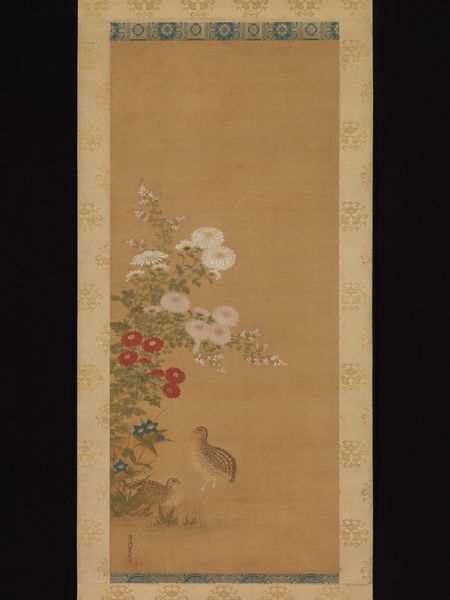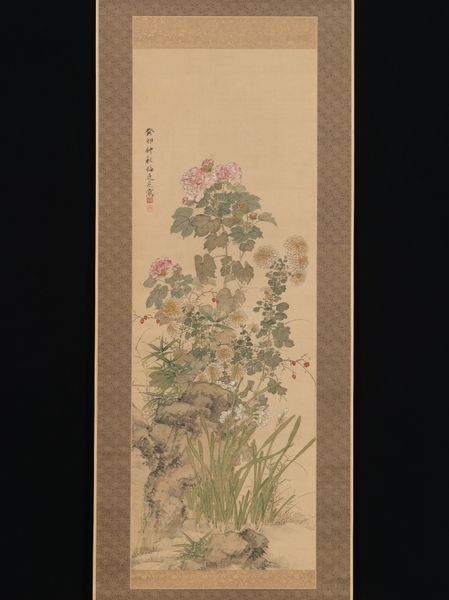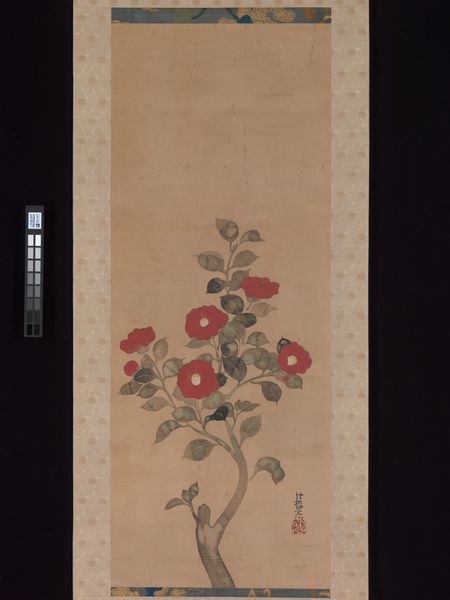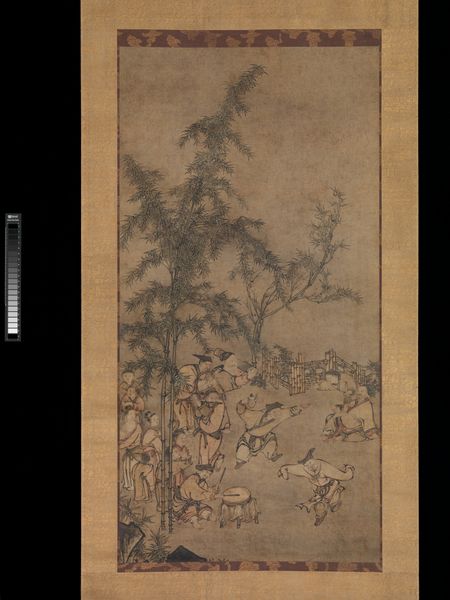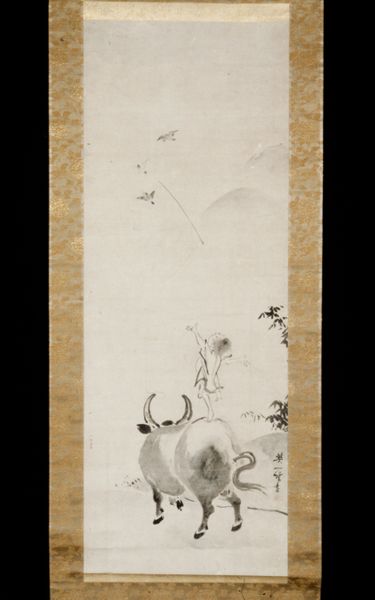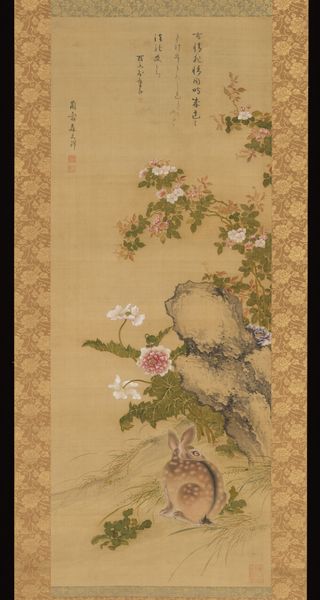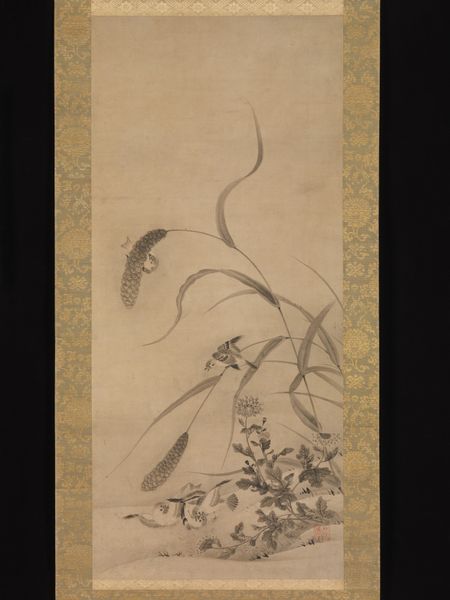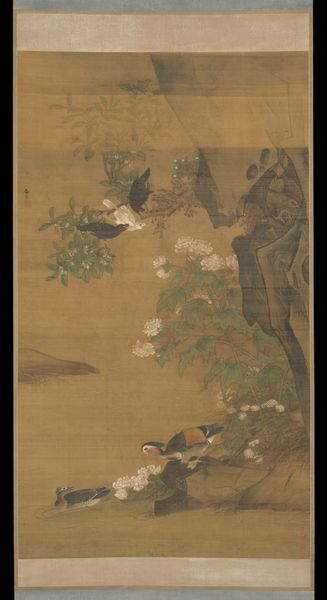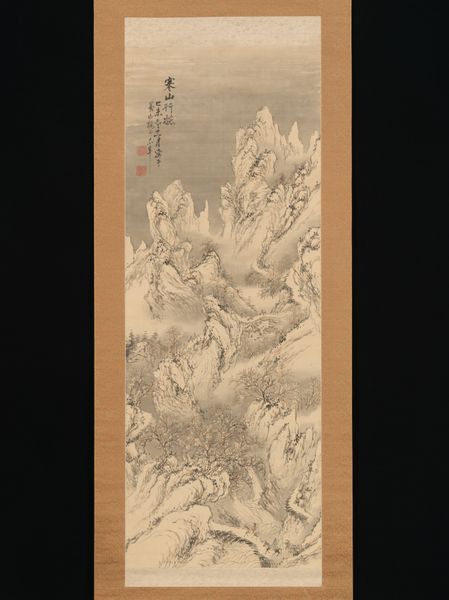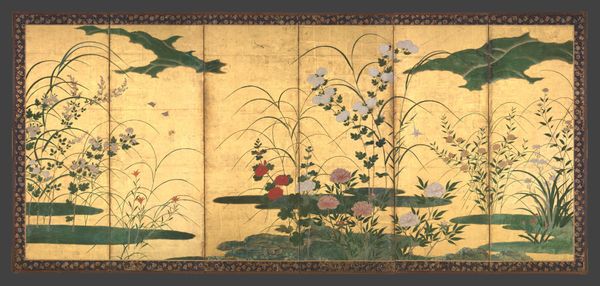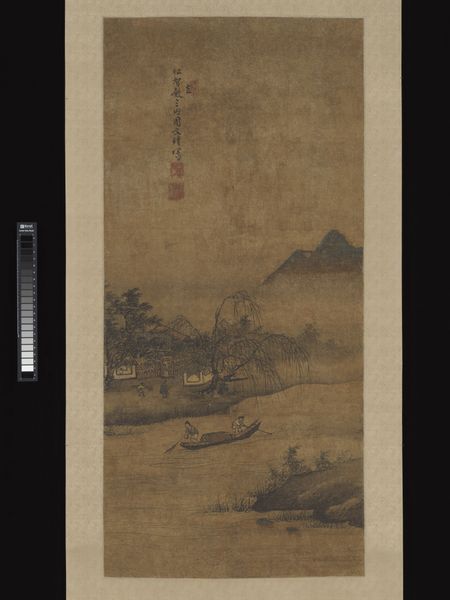
Dimensions: Image (a): 37 11/16 × 17 5/8 in. (95.8 × 44.8 cm) Overall with mounting (a): 74 7/16 × 23 3/8 in. (189 × 59.3 cm) Overall with knobs (a): 74 7/16 × 25 3/16 in. (189 × 64 cm) Image (b): 37 11/16 × 17 5/8 in. (95.8 × 44.8 cm) Overall with mounting (b): 74 5/8 × 23 3/8 in. (189.5 × 59.3 cm) Overall with knobs (b): 74 5/8 × 25 3/16 in. (189.5 × 64 cm)
Copyright: Public Domain
Editor: This watercolor piece, "Birds and Flowers of Summer and Autumn," created between 1534 and 1566 by Shikibu Terutada, is so delicate. I love the subdued palette and how it captures a quiet moment in nature. What draws your eye when you look at it? Curator: What I find most compelling is how the materials themselves communicate a specific cultural and economic context. Consider the silk the watercolor is painted on: who had access to such a fine material? What does that say about Terutada's patrons and the intended audience? The production of these pigments – how were they sourced and processed? Editor: So, you're thinking about the social and economic implications of the materials used. I hadn't considered that. Curator: Precisely! Think about the labor involved in creating the silk, in mixing the paints, and in the time it took Terutada to execute this. It’s easy to see the image, but harder to visualize the means of its production and its embedded cultural capital. This was not merely an artistic expression, but a material outcome of a specific time and place. Editor: I guess I was focusing more on the aesthetic, you know, the birds in flight. But now I’m wondering if those birds symbolize something specific about labor or class structure. Curator: The representation certainly has meaning but considering the labor of depiction opens us up to larger social consideration. Do you think there’s a tension in examining something as seemingly 'natural' as birds and flowers through a materialist lens? Editor: Definitely. It forces me to confront the often-invisible systems of production that underpin even the most beautiful objects. It's kind of unsettling, but also really insightful. Curator: Indeed, by considering art's materiality, we move beyond just aesthetic appreciation. Editor: Right, it makes me want to research the specific pigments used, where they came from, and who was involved in their creation. It makes art history more grounded. Curator: I'm glad to have shifted your thinking around “Birds and Flowers of Summer and Autumn.” Remember to consider the entire means of production and context. Editor: Thank you! I see the painting in a totally different light now.
Comments
No comments
Be the first to comment and join the conversation on the ultimate creative platform.
